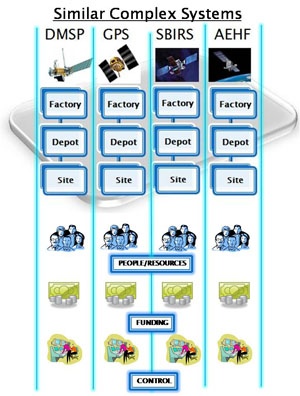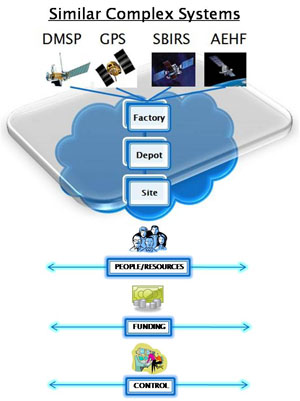
|
||
The Integrated Maintenance Mission Operations Center - System Status Display (iMMOC–SSD) Project is a systems engineering study to analyze the concept of an integrated maintenance mission operations center and its corresponding system status display. The work produced serves as the overall group deliverable for a graduate-level course at George Mason University named OR 680: Project Course in Operations Research, Systems Engineering and Computational Modeling. The project is sponsored by Lockheed Martin Corporation in support of the Space-Based Infrared System (SBIRS) program. The SBIRS Program has the challenge of maintaining a diverse set of maintenance depots performing software development, software maintenance, hardware maintenance, training, and logistics (e.g., licensing agreements, maintenance agreements, purchasing equipment, and inventory). Due to its primary mission of SBIRS of early warning of a strategic missile launch, SBIRS ground elements were forward deployed across the globe. Therefore, the depots are geographically dispersed, providing support to multiple stakeholders and receiving funding from multiple sources. Lockheed Martin is looking to consolidate SBIRs maintenance depots, either virtually or physically, with the desired outcome being: increased efficiencies, reduced system downtime, and reduced costs---while providing assurances to stakeholders that such a consolidation will not result in degraded system performance. To do so, the concept of integrated logistics will be employed to where the entire logistics tail, including the maintenance activities associated with a deployed system are explicitly analyzed, modeled, and integrated into the maintenance and logistics activities associated with other systems, thereby preventing duplication of effort and reducing costs associated with maintenance and other logistics activities. Further, logistics activities are included in the operational aspects of the primary mission, raising activities traditionally viewed as non-value add, such as maintenance and spare parts management to their appropriate mission-support levels. Fundamentally, integrated logistics requires the ability to treat logistics as a mission, just as strategic warning is the mission of SBIRS. Further, just as the SBIRS operations center tracks the status of the various SBIRS segments – payload, spacecraft, communications, ground systems, and exploitation systems – to report on the mission status of SBIRS, so to must integrated logistics have a command center that tracks the various segments that make up the logistics tail of the system. As SBIRS transitions into a fully operational capacity over the next few years, there will be no new development money to fix issues that may be present in the system. Therefore, it is necessary to leverage the maintenance dollars provided by each stakeholder to ensure the optimal efficiency of the SBIRS mission. To do this, the SBIRS contractor is investigating the creation of an Integrated Maintenance Mission Operations Center (IMMOC) that will track the operational status of the maintenance mission, performing system overwatch across the maintenance functions and possibly executing command and control of maintenance functions.    The project sponsor has provided the iMMOC-SSD Study Team with an iMMOC Concept of Operations (CONOP) to serve as the staring point for the study. During the 3 month period of performance, the team will answer as many of the following objectives as time and other constraints will permit:
|
|
© Copyright Sweeney/Icore/Icore. All Rights Reserved. |
